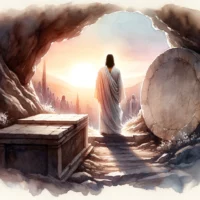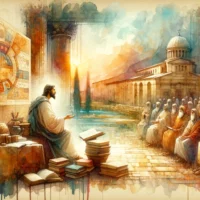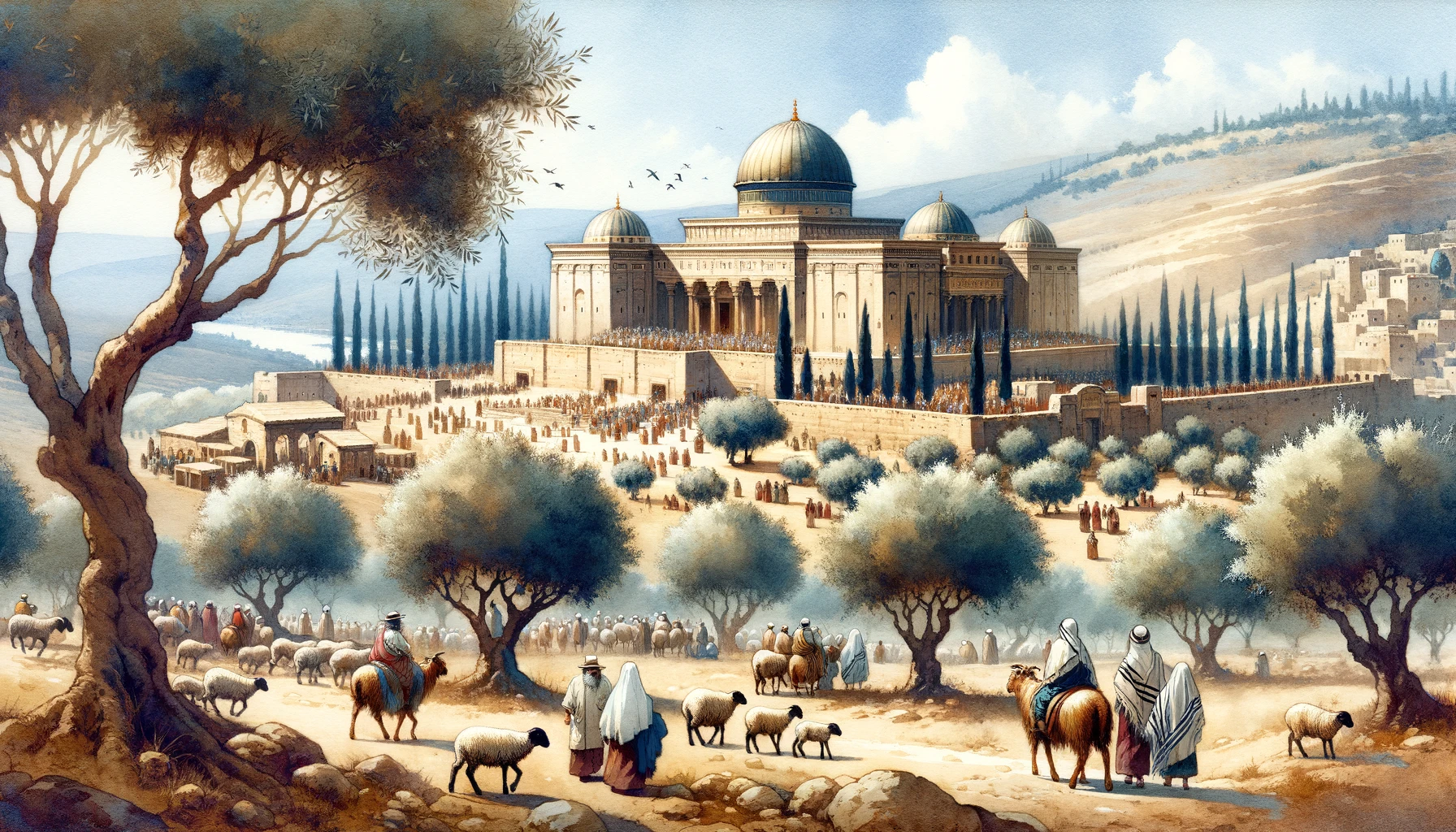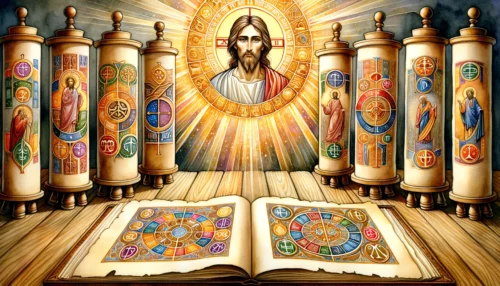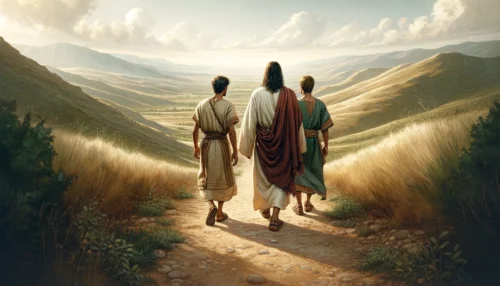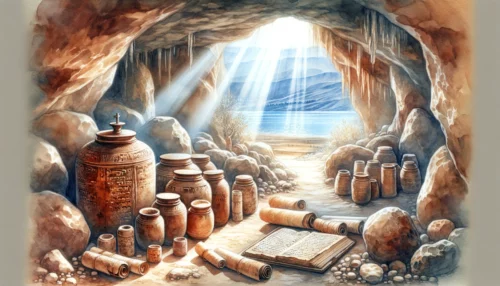The temple, a centerpiece in biblical history, played a crucial role in the spiritual lives of the Israelites, offering a focal point for worship, reconciliation, and divine communication. From serving as a divine meeting place to acting as a location for sacrificial rites, the temple held a profound religious significance that permeates into contemporary Christian understanding of God’s presence and holiness. Let us journey through scripture and history, understanding the purpose of the temple and its enduring relevance to our faith.
The Temple as a Meeting Place Between God and Man
Throughout the Old Testament, the temple is repeatedly described as the dwelling place of God among His people. In fact, the main reason the Israelites built the temple was to create a special place where they could meet with God. The temple became a bridge between the divine and earthly realms.
The most illustrative example of this connection can be seen in the design and construction of the Tabernacle, the precursor to the Temple, as outlined in the book of Exodus (chapters 25-27). The instructions given to Moses on Mount Sinai were highly detailed, emphasizing the importance of the Tabernacle’s role. It was designed to be portable, enabling the Israelites to carry it with them during their wanderings, signifying that God was always with them.
Inside the Tabernacle, the Holy of Holies was the most sacred part, containing the Ark of the Covenant, representing the very presence of God. This room was separated from the rest of the Tabernacle by a veil, signifying the separation between God and humanity because of sin. Once a year, on the Day of Atonement, the high priest was allowed to enter the Holy of Holies to offer a blood sacrifice, indicating God’s provision for the atonement of sins (Leviticus 16).
The First and Second Temples, built later in Jerusalem, followed this pattern. The presence of God, known as the Shekinah glory, filled the temple, just as it had filled the Tabernacle (1 Kings 8:10-11). This divine presence underscored the temple’s purpose as a place of communion between God and His people. The sacrifices performed there were not just ritualistic actions but served as ways for the Israelites to approach their holy God.
The temple was not simply a building, it was a conduit for the Israelites to understand their relationship with God. It was a visual and tangible reminder that while they were separated from God due to sin, God had made a way for them to approach Him through the prescribed sacrificial system. In this sense, the temple was a symbol of hope and grace.
It’s worth considering the New Testament, where Jesus Christ Himself is portrayed as the new Temple. His body became the dwelling place of God (John 1:14). The veil separating the Holy of Holies was torn at His death (Matthew 27:51), symbolizing the removal of the separation between God and humanity. The temple in Jerusalem was no longer the only place to meet with God; through Christ, God had come to dwell among His people directly.
The biblical temple served as a vital meeting point between God and His people. Its detailed design and structure facilitated divine-human communion, with the Holy of Holies standing as the symbolic presence of God. The sacrificial system within the temple provided a way for the Israelites to approach their holy God, signifying hope and grace amidst their sinfulness. With the advent of Jesus Christ, this physical temple was transcended, as He became the ultimate meeting place between God and humanity, removing the separation brought about by sin.
The Role of Sacrifices and Atonement in the Temple
Sacrifices and atonement ceremonies formed an integral part of temple worship. They were a means for the Israelites to maintain their relationship with God, express their devotion, and seek forgiveness for their sins.
The Book of Leviticus provides the comprehensive structure and types of sacrifices the Israelites were to perform in the temple. Among the most significant were the burnt offering, grain offering, peace offering, sin offering, and guilt offering (Leviticus 1-7). Each had its distinct purpose and set of rules, but all of them were integral to the Israelites’ worship of God and acknowledgement of their sinfulness.
The burnt offering, for instance, was a voluntary act of worship that signified atonement for unintentional sin. The worshiper would bring an unblemished animal to the temple, lay hands on it, symbolically transferring his sins to the animal, and then slaughter it. The priest would then burn the entire animal on the altar, creating a pleasing aroma to God (Leviticus 1). This act demonstrated the worshiper’s complete surrender to God and the seriousness of sin, which requires life – symbolized by blood – to atone.
The Day of Atonement, described in Leviticus 16, was the most sacred day in the Israelite calendar. It took place annually and involved unique sacrifices performed by the high priest. He would enter the Holy of Holies with the blood of a bull and a goat. This blood was sprinkled on the mercy seat of the Ark of the Covenant, signifying the covering or atonement of the sins of the entire nation.
All these sacrificial practices were ultimately pointing toward the perfect sacrifice that would come in Jesus Christ. According to the New Testament, Jesus became the ultimate sacrifice, His death on the cross atoning for all humanity’s sins once and for all (Hebrews 10:1-18). His sacrifice ended the need for the temple’s continual sacrifices, showing God’s immense grace and love for His people.
While temple sacrifices might seem foreign and perhaps even brutal to us, they play a significant role in illustrating our human condition and need for divine intervention. The sacrifices underscored the seriousness of sin and the need for atonement, and they pointed forward to the ultimate act of love and redemption through Jesus Christ.
The temple was central to the system of sacrifices and atonement in ancient Israelite worship. Various types of offerings were conducted to express devotion, acknowledge sinfulness, and seek forgiveness. The most sacred ceremony was the annual Day of Atonement, involving unique sacrifices that covered the sins of the nation. While this system was integral to maintaining the Israelites’ relationship with God, it was ultimately fulfilled in the New Testament through the sacrifice of Jesus Christ, ending the need for continual temple sacrifices.
The Temple as a Symbol of God’s Presence and Holiness
The temple served as a physical embodiment of God’s presence and His holiness, reinforcing His divine sovereignty and sacredness. This symbolism was intricately woven into its design, materials, and daily functions.
The presence of God was manifested in the temple in a unique and palpable way. When Solomon dedicated the first temple in Jerusalem, the glory of the Lord filled it in the form of a cloud, preventing the priests from performing their duties (1 Kings 8:10-11). This divine manifestation, known as the Shekinah glory, emphasized God’s abiding presence among His people.
The temple’s design and materials further represented God’s holiness. The innermost sanctum, the Holy of Holies, was overlaid with pure gold and contained the Ark of the Covenant, the earthly throne of God (1 Kings 6:19-20). It was here that God manifested His presence in a most potent way, reflecting His transcendence and sacredness.
The elaborate rituals and regulations associated with the temple were not arbitrary. They underscored the holiness of God and the serious nature of approaching Him. The high priest, for instance, could only enter the Holy of Holies once a year, and only after meticulous purification rituals (Leviticus 16). This gave a clear message that God is holy and His presence cannot be taken lightly.
In the New Testament, this symbolism is carried forward, but with a significant shift. With the arrival of Jesus Christ, God’s presence was no longer confined to a physical building. Jesus is described as the Word becoming flesh and dwelling among us (John 1:14). He became the new temple, embodying God’s presence and holiness among humanity.
The apostle Paul extends this symbolism to individual believers and the church community, describing them as the temple of the Holy Spirit (1 Corinthians 6:19-20; 2 Corinthians 6:16). This imagery communicates the profound truth that through faith in Christ, believers become the dwelling place of God, charged with reflecting His holiness in their lives.
The temple symbolized God’s presence and holiness in a profound way. From the manifestation of the Shekinah glory to the meticulous design and rituals, it served as a constant reminder of God’s abiding presence and sacredness. With the coming of Jesus Christ, the temple’s symbolism was expanded, as He embodied God’s presence and holiness. This was further extended to individual believers and the church community, who are now considered the dwelling place of God through the indwelling of the Holy Spirit.
Glimpsing God’s Glory: The Timeless Echoes of the Temple
The temple, with its multifaceted role and symbolism, was indeed a profound part of biblical history and faith. From serving as a divine meeting place, a center for sacrificial rites, to being a potent symbol of God’s presence and holiness, the temple shaped the relationship between God and His people. With the coming of Jesus Christ, the concept of the temple evolved, showing that the living God chose to dwell not in buildings made by hands, but within the hearts of believers. The echoes of the temple resonate in our faith today, continually reminding us of God’s abiding presence, His holiness, and His redemptive plan.
- How can the concept of the temple as God’s dwelling place shape your understanding of His presence in your life?
- What does the symbolism of the sacrificial system in the temple teach you about sin, forgiveness, and God’s grace?
- How can the temple’s representation of God’s holiness impact your daily living as a Christian?
Let the timeless echoes of the temple inspire us. We are the dwelling places of God, charged to reflect His holiness, live in His grace, and shine forth His glory in our world.
